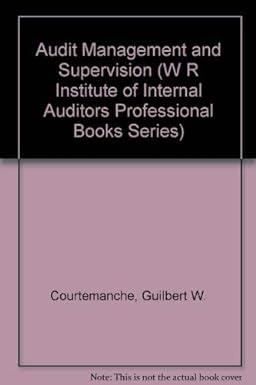Question A-Capital Budgeting (15 marks) The capital budgeting analysis was completed by a company Chief Financial Officer (CFO) for the following project. Answer the questions below. Yr.o Yr. 1 Yr. 2 Yr. 3 Yr.4 Yr. 5 Cumulative Income Statement: Sales Cost of Goods Sold Gross Profit Fixed Expenses (exduded Depredation) Deprecation Eamings Before interest and Taxes (EBIT) Tawes [ Net income 550.000 (165,000) 385.000 (165,000) (200,000) 120,000 (30,000) 90,000 516.670 (155.001) 361,669 (155.001) 100.000) 106,668 (26.568) 80.000 350.000 (105.000) 245.000 (105,000 [100,000) 40.000 (10,000) 30.000 300,000 190,000) 210,000 190,000) (100.000 20,000 (5.000) 15,000 250.000 75.000] 175.000 175,000) (100,000) 236,665 215,000 Cash Flows: EBIT 120,000 100,000 30.000 190.000 Add Depreciation Subtract Taxes Operating cash rows 100.000 105 388 100.000 (26.685) 180.000 40,000 100 000 (10.000 130.000 20,000 100,000 (5.000) 125.000 100.000 Atlets Purchase Propostment in Equipment investment hones Relooflument after Tax Tata Chow 15000001 120.000 20.000 50.000 170.00 1820.000 129.000 180.000 150.000 115.000 0.680 out Factor FA co 520,000 109 12.10 9.526 145480 0175 9739 22621 105.570 Red Value of Equipment after Tax Total Cash Flows ( (520,000) 190.000 2000 50,000 170.000 110,000 130 000 115.000 Discount Factor at 20% Present Values 1 000 (520,000) 0.709 172.710 0.826 148,680 0.751 9760 0163 78.545 105 570 Questions - Calculate or answer the following: 1. Accounting average return? 2. Payback period? 3. Net present value? 4. Is the project internal rate of return of 16.5% considered good or bad, why? 5. The profitability index for the project? 6. The return on sales for each year (ROS). Calculate the average return on sales for the five years. The ROS statistic is used for which type of responsibility centre? 7. The company set goals for the accounting average return of 20%, payback period of 5 years, return on sales of 10% and required investment return of 10%. Would you accept or reject the project and why? Question A-Capital Budgeting (15 marks) The capital budgeting analysis was completed by a company Chief Financial Officer (CFO) for the following project. Answer the questions below. Yr.o Yr. 1 Yr. 2 Yr. 3 Yr.4 Yr. 5 Cumulative Income Statement: Sales Cost of Goods Sold Gross Profit Fixed Expenses (exduded Depredation) Deprecation Eamings Before interest and Taxes (EBIT) Tawes [ Net income 550.000 (165,000) 385.000 (165,000) (200,000) 120,000 (30,000) 90,000 516.670 (155.001) 361,669 (155.001) 100.000) 106,668 (26.568) 80.000 350.000 (105.000) 245.000 (105,000 [100,000) 40.000 (10,000) 30.000 300,000 190,000) 210,000 190,000) (100.000 20,000 (5.000) 15,000 250.000 75.000] 175.000 175,000) (100,000) 236,665 215,000 Cash Flows: EBIT 120,000 100,000 30.000 190.000 Add Depreciation Subtract Taxes Operating cash rows 100.000 105 388 100.000 (26.685) 180.000 40,000 100 000 (10.000 130.000 20,000 100,000 (5.000) 125.000 100.000 Atlets Purchase Propostment in Equipment investment hones Relooflument after Tax Tata Chow 15000001 120.000 20.000 50.000 170.00 1820.000 129.000 180.000 150.000 115.000 0.680 out Factor FA co 520,000 109 12.10 9.526 145480 0175 9739 22621 105.570 Red Value of Equipment after Tax Total Cash Flows ( (520,000) 190.000 2000 50,000 170.000 110,000 130 000 115.000 Discount Factor at 20% Present Values 1 000 (520,000) 0.709 172.710 0.826 148,680 0.751 9760 0163 78.545 105 570 Questions - Calculate or answer the following: 1. Accounting average return? 2. Payback period? 3. Net present value? 4. Is the project internal rate of return of 16.5% considered good or bad, why? 5. The profitability index for the project? 6. The return on sales for each year (ROS). Calculate the average return on sales for the five years. The ROS statistic is used for which type of responsibility centre? 7. The company set goals for the accounting average return of 20%, payback period of 5 years, return on sales of 10% and required investment return of 10%. Would you accept or reject the project and why








